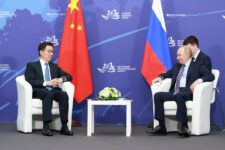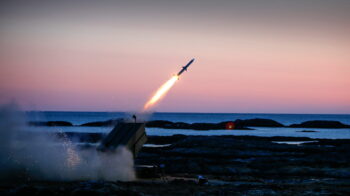
HMS Tamar, pictured above at a US Navy base, is currently on a five-year deployment to the Indo-Pacific. (US Navy photo by Mass Communication Specialist 2nd Class Jesus O. Aguiar)
WASHINGTON — The United States, United Kingdom and Australia recently completed a trilateral exercise focused on using unmanned undersea technology to protect subsea critical infrastructure as part of the security pact known as AUKUS, the Pentagon said in a statement today.
The exercise, which happened off the eastern coast of Australia, included Australia’s new Undersea Support Vessel and the Australian Defence Vessel Guidance, as well as the United Kingdom’s Offshore Patrol Vessel HMS Tamar. The Pentagon statement did not say exactly when the exercise took place.
“ADV Guidance’s primary role is to support undersea and surveillance systems trials and includes the ability to host a small team of sailors as well as on-board and off-board systems, with both crewed and uncrewed capability,” according to the statement.
HMS Tamar, which is on a five-year deployment to the Indo-Pacific, used divers and undersea vehicles to conduct “mine countermeasure operations, and monitor critical infrastructure, including pipelines and communication cables,” the statement said.
“These exercises accelerate our combined development of advanced military capabilities,” said Adm. Samuel Paparo, commander of US Pacific Fleet. “In a dynamic strategic environment and the escalation of competitors’ coercive activities, AUKUS is not just about the exchange of submarines and capabilities, it is an expansion of our continued trust in and commitment to our allies.”
The exercise’s announcement comes just weeks after a trio of European countries announced two separate incidents where their respective undersea infrastructure had been damaged. The first incident involved a telecom cable connecting Estonia and Sweden and another one involved a gas pipeline and telecom cable connecting Estonia and Finland.
In the days after the damages were discovered, the top officer from the United Kingdom’s Royal Navy conceded that NATO was struggling with how to prevent such threats to undersea infrastructure.
“The response for us now, as militaries and maritime communities, is to work out how we work together best in order to deliver [better security],” Adm. Ben Key, First Sea Lord of the Royal Navy, said during an interview at a Washington think tank in October.
























